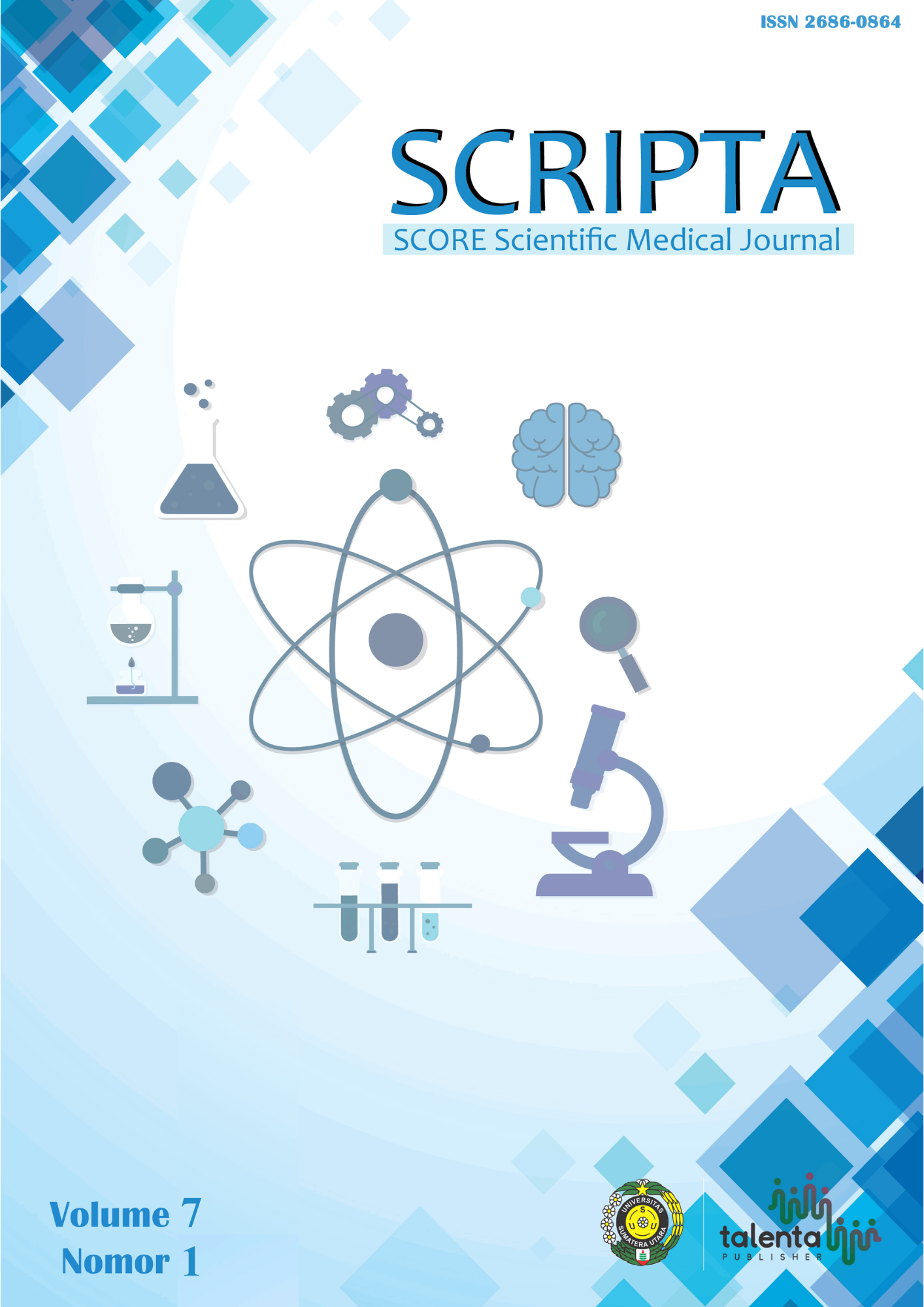The Diminishing Role of Skull X-Rays in Trauma Brain Injury: A Comprehensive Review of the Literature
DOI:
https://doi.org/10.32734/scripta.v7i1.20715Keywords:
TBI, Skull X-ray, Rontgen tengkorak, cedera kepala traumatisAbstract
Background: Skull X-rays have long been utilized in the evaluation and management of traumatic brain injury (TBI) primarily for the identification of cranial fractures. However, their role has been challenged by the introduction of advanced neuroimaging techniques. Objectives: This review aims to explore the current significance of skull X-rays in the treatment of TBI, considering the advancements in neuroimaging, especially CT Scan. Methods: A narrative review approach was used, including a comprehensive computerized literature search with MeSH-based keywords “Traumatic Brain Injury” and “Skull X-Ray” across several reputable databases such as Scopus, PubMed, and Web of Science. The search spanned the years 2000 to 2025 and aimed to evaluate the diagnostic utility of skull radiography in TBI, focusing specifically on different age groups, specifically those under and over 2 years of age. Conclusion: Current evidence suggests that skull X-rays have limited sensitivity in detecting intracranial injuries, which are the primary concern in cases of TBI. Therefore, clinical judgment should guide the decision to pursue CT imaging instead of relying solely on skull X-rays. The routine use of skull X-rays in managing TBI is thus discouraged because of their limited diagnostic capabilities and the potential risk of delaying timely and appropriate medical intervention.
Keywords: Skull X-rays, Traumatic Brain Injury.
Latar Belakang: Rontgen tengkorak telah lama digunakan dalam evaluasi dan manajemen cedera otak traumatis terutama untuk identifikasi fraktur kranial. Namun, peran rontgen tengkorak telah dipertanyakan oleh karena adanya teknik neuroimaging yang lebih canggih. Tujuan: Tinjauan ini bertujuan untuk mengeksplorasi relevansi kontemporer dari rontgen tengkorak dalam manajemen cedera kepala traumatis, dengan mempertimbangkan kemajuan dalam neuroimaging, khususnya CT Scan. Metode: Pendekatan tinjauan naratif digunakan, dengan melibatkan pencarian literatur komputerisasi yang menyeluruh menggunakan kata kunci berbasis MeSH “Traumatic Brain Injury” dan “Skull X-Ray” di beberapa basis data terkemuka seperti Scopus, PubMed, dan Web of Science. Pencarian mencakup tahun 2000 hingga 2025 dan bertujuan untuk menilai kegunaan diagnostik rontgen tengkorak dalam cedera kepala traumatis dengan perhatian khusus pada kelompok usia yang berbeda, khususnya mereka yang berusia di bawah dan di atas 2 tahun. Kesimpulan: Bukti saat ini menunjukkan bahwa rontgen tengkorak memiliki sensitivitas terbatas dalam mendeteksi cedera intrakranial yang merupakan perhatian utama dalam kasus cedera kepala traumatis. Oleh karena itu, penilaian klinis harus menjadi dasar keputusan untuk melakukan CT Scan daripada hanya mengandalkan rontgen tengkorak. Oleh karena itu, penerapan rutin rontgen tengkorak dalam manajemen cedera kepala traumatis tidak dianjurkan karena kemampuan diagnostik yang terbatas dan risiko menghambat intervensi medis yang tepat waktu dan sesuai.
Kata kunci: Cedera Kepala Traumatis, Rontgen Tengkorak.
Downloads
Downloads
Published
How to Cite
Issue
Section
License
Copyright (c) 2025 Samuel Panjaitan, Salsabila Pandiya, Syafira Syafridon, Andre Marolop Pangihutan Siahaan

This work is licensed under a Creative Commons Attribution-NonCommercial 4.0 International License.
Authors who publish with SCRIPTA SCORE Scientific Medical Journal agree to the following terms:
- Authors retain copyright and grant SCRIPTA SCORE Scientific Medical Journal right of first publication with the work simultaneously licensed under a Creative Commons Attribution-NonCommercial License that allows others to remix, adapt, build upon the work non-commercially with an acknowledgment of the work’s authorship and initial publication in SCRIPTA SCORE Scientific Medical Journal.
- Authors are permitted to copy and redistribute the journal's published version of the work non-commercially (e.g., post it to an institutional repository or publish it in a book), with an acknowledgment of its initial publication in SCRIPTA SCORE Scientific Medical Journal.














